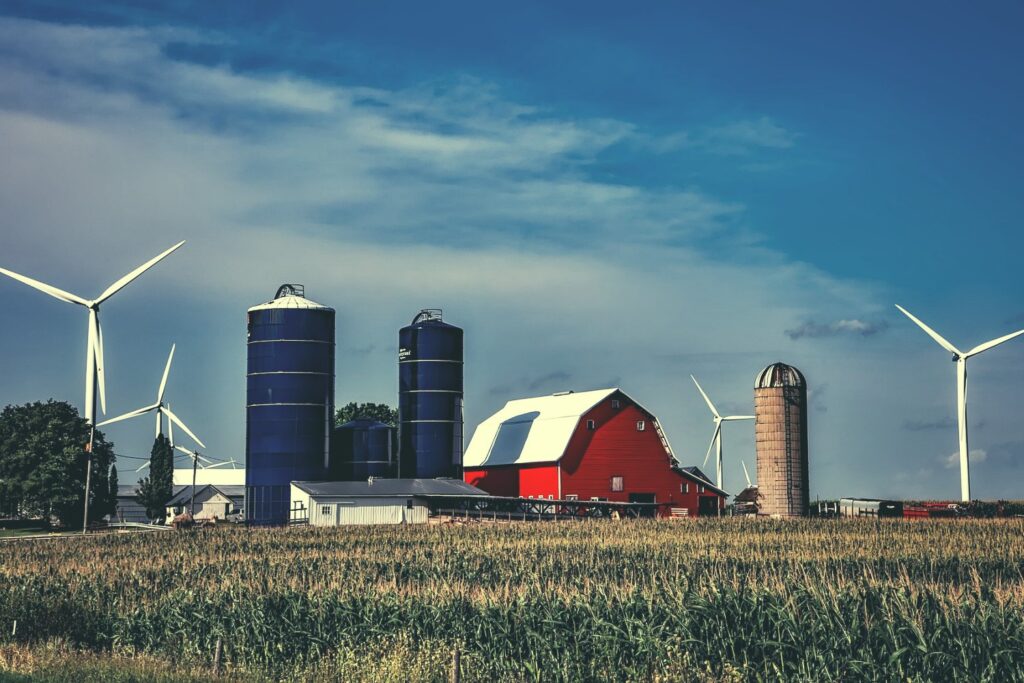By Norris Wilson, B.A., AACI, P.App
A paper was published recently purporting to prove that the presence of industrial-scale wind turbine has little or no effect on local property values. Titled “The visual effect of wind turbines on property values is small and diminishing in space and time,” the academic paper was published in the journal Proceedings of the National Academy of Sciences or PNAS.
The authors all claim credentials in economics and have affiliations with foundations devoted to research on climate change. None of the authors has experience or credentials in property valuation.
On publication, the paper received extraordinary international media coverage, which is unusual for
academic papers.
The paper concludes that, following a “U.S.-wide assessment of the externality costs of wind power generation through the visibility impact on property values,” the result is:
…on average, wind turbine visibility negatively affects home values in an economically and statistically significant way in close proximity (<5 miles/8 km). However, the effect diminishes over time and in distance and is indistinguishable from zero for larger distances and toward the end of our sample.
Wei Guo, Leonie Wenz, Maxmillian Aufhammer, Geoffrey Heal ed. 2024. The visual effect of wind turbines on property values is small and diminishing in space and time. PNAS Vol 121 No 13, 2024, p. 1
The authors claim to have used data from more than 300 million home sales in the U.S., associated with the fleet of 60,000 wind turbines operating in the U.S. from 1997 to 2020.

The authors acknowledge that wind turbines have been “a source of controversy as they may create low frequency noise, cast shadows, create flickering, and visually degrade the landscape.”1
It only took two paragraphs into the paper for the authors to employ the insulting term “NIMBY” (not in my backyard) to dismiss the concerns of neighbouring property owners. They complain that “these NIMBY concerns, which in many places have manifested in vocal public opposition to new projects, can have an impact on the siting decision of wind power infrastructure.”1
Other authors, however, notably environmental law experts, counter that using the term “NIMBY” is “an oversimplification of opposition that more accurately is based on a complex mix of factors.”
“Many communities have genuine concerns about impacts on environmental integrity, viewscapes, food production, and social fabric,”2 McRobert et al., say in the journal Renewable Energy Law and Policy.
Similarly, authors Stephen Hill and James Knott note that concerns about environmental noise pollution are often “conflated with other social issues such as property value,” so as to deflect from the seriousness of community concerns and demean the opposition.3
It is true that there is growing public opposition to industrial wind power sites. Energy commentator and author Robert Bryce maintains a database recording municipalities that have formally rejected new wind power sites. At the time of writing, Bryce has recorded 427 U.S. municipalities that denied approval to new wind power sites. In a chart detailing the rationale for these rejections, the reasons include loss of productive agricultural land, the potential for noise pollution, and other environmental impacts. While the visibility of wind turbines was mentioned, it does not seem to be the prime reason for objection to this industrial land use.
So, while others document economic and environmental concerns regarding wind turbines, the authors of the PNAS paper chose to focus solely on the appearance of the wind turbines.
Typifying disamenities or externality costs of wind turbines as caused by “visibility” is disingenuous to say the least. Measuring value loss by comparing sales near wind turbines with a control group away from turbines captures all the impacts of turbine operation including those caused by noise, flicker, infrasound, etc. All of these increase with increasing proximity to turbines.
Worse, by careful selection of data the authors have engaged in statistical sleight-of-hand. Using visibility as the only criterion for assessing property value loss allowed the researchers to screen out some homes near turbines which have no view of a turbine but may nevertheless be exposed to noise from them. In spite of this, they include these properties in the control group. This does not mean they are not affected. Including them in the control group has the effect of lowering the average price of control group properties, thus skewing the average impact downward artificially.
Further, salting the sample with a preponderance of properties, which are far enough away (3-10 km) as to be minimally affected by noise, if at all, and overwhelmingly large in number, is another strategy employed to average down the impact on the properties much closer to the turbines than 10 km. Thos are the properties that may be affected significantly.
If most impacts are confined to the part of the sample nearest the turbines, say <2km, then the properties from 2 km to 10 km make up 96% of the sample, by area, and render their average impact calculation nonsense. The authors report on page 3 that there are only 250,000 transactions within 1.5 km of a wind turbine in the U.S., while there are 8.5 million sales within 10 km. If one is genuinely looking for impacts from wind turbines, the more honest approach would be to look at the sales closest to the turbines for the best indication of effects.
Obviously, the greatest impact of wind turbines or WTs is at close proximity, i.e., 2km or less. Screening out turbines at close proximity will not negate the impacts of noise, vibration or infrasound/lowfrequency noise (Acknowledged by the authors as factors that do exist). To employ this approach has the effect of reducing or denying evidence of the actual impact of turbines by ignoring the loss in value to these affected properties.
Other researchers have examined the effect of viewscape on property values, as one of a collection of factors. In 2016, a team of researchers from Clarkson University and Nanos Research were asked to assess the impact on property values in the Town of Henderson NY, as a result of a proposed industrial wind power site on nearby Galloo Island, in the St. Lawrence River. The researchers looked at economic impacts such as changes to tourism, as well as viewscape and job creation. Their conclusion:
We see in these projections that the average home is expected to lose between 11.77% and 12.77% of its value if the Galloo Island turbines are built. Importantly, however, this average includes homes both with and without a view. Homes with a view will face the bulk of the value loss. In aggregate, this analysis suggests a total value loss for the Town of Henderson of between $39.8M and $43.2M.
Martin Heintzelmann, Stephen Bird, William Olson, Nik Nanos, Daniel Kolundzic. 2016. Exploring the impact of the proposed Galloo Island energy project, p. 17
The Nanos-Clarkson team did allow that the property value loss effect could diminish over time if people became accustomed to the sight of the turbines.

To concentrate solely on view, however, does not afford a comprehensive analysis of factors affecting property value. An interesting choice in valuation factors would have been not the visibility of wind turbines but rather, the presence of audible effects, in other words, whether people can hear them. That would open the door to the potential for effects such as sleep disturbance for people in neighbouring properties. The noise emissions from wind turbines have been well documented and was found by the Government of Canada in a study to be a source of “community annoyance” or distress,4 and is listed by the authors themselves as a factor in the “controversy” over industrial wind power sites. (Wind turbines also emit inaudible sound.) Accordingly, analysis could have focused on a 2 to 3-km radius, regardless of visibility from turbines, in comparison to estimated loss in value. However, the authors expressly selected visibility as a variable for their analysis while ignoring other, perhaps more serious, factors.
Then there is the issue of the sample size. Again, this appears to be a choice that would guarantee desired results. Using such a large sample beyond range of noise/infrasound impacts has the effect of averaging down the overall impact of WTs on value.
The sample of 10k radius includes a vast majority of unaffected homes notwithstanding they can see a turbine 5 to 10 km away.
The claim that the data base behind the analysis was 300 million sales is completely false.
The truth is, the analysts cite a data base of 8.5 million houses within 10 km of a wind turbine as their
sample for analysis, not 300 million.
The sample size is also problematic in that there appears to be no differentiation from various types and sizes of wind turbines. If the sample size was based on wind turbines constructed as long ago as 1997, clearly there would be a vast difference from the larger, more powerful wind turbines being constructed (and proposed) today. For example in Canada, the wind turbine in downtown Toronto at Exhibition Place (often proffered as an example of how benign wind turbine generators are) is only 91 m or 299 feet tall and only 750 kW, as compared with the wind turbines near Ottawa, Ontario, in Canada that began operating in 2020, which are more than 600 feet tall and are 3.4 megawatt capacity.
In the subject article, the viewshed analysis is of small old turbines (65kW/1985) with hub height of 24m — very different. The use of smaller, older turbines casts doubt on the conclusions of this study, and is arguably not relevant to many wind power sites operating or proposed today.
The authors do not try to get away with saying there is no property value loss from exposure to wind turbines, but they make every effort to claim the effect is minimal. They state in Results:
We find that having at least one wind turbine in a home’s viewshed (10 km radius) reduces the sales price of such a property on average by 1.12%, which is statistically different from zero.
Op cit, p. 2
But wait. They do cobble together an estimate of the economic effect of this property value loss (which is not zero, of course), and say:
…this amounts to a US $24.5 billion reduction in the property value for all houses affected by the visibility dis-amenity effect nationwide,
However, that is a mere piffle when taken in context, they claim:
… [the value loss] is small when compared to the total value of US homes (≈ US$45 trillion).
What they also say is that there were only 250,000 sales within 1.5 km of turbines in the U.S. Assuming that these bore the brunt of value loss reported in the data one may accept the following perspective.
Property value loss of $25 billion when applied to 60,000 turbines represents a property value loss to private individuals of $416,666 per turbine. Most of the loss must have been borne by the 250,000 sales within 1.5 km which reflects $100,000 per property or about 25% of property value on average.
In conclusion, the results of this study conveniently add to the wind power lobby’s lexicon of reasons to dismiss opposition to community industrialization by wind turbines. While the authors employ a number of approaches (all of which would get anyone professionally involved in property valuation tossed out on the sidewalk) , the fact remains, they actually prove that value loss does occur.
And it is not insignificant.
Source: Wind Concerns Ontario: “Recent study proves property value loss results from proximity of industrial wind turbines“
- Wei Guo, Leonie Wenz, Maxmillian Aufhammer, Geoffrey Heal ed. 2024. The visual effect of wind turbines on property values is small and diminishing in space and time. PNAS Vol 121 No 13, 2024, p. 1[↩][↩]
- D. McRobert, J. Tennent-Riddell and C. Walker. 2016. Renewable Energy Law and Policy. Ontario’s Green Economy and Green Energy Act: Why a Well-Intentioned Law is Mired in Controversy and Opposed by Rural Communities.[↩]
- Stephen Hill and James Knott. 2010. Renewable Energy Law and Policy. Too Close for Comfort: Social Controversies Surrounding Wind Farm Noise Setback Policies in Ontario.[↩]
- Health Canada. 2014. Wind Turbine Noise and Health Study. Available at: Wind Turbine Noise and Health Study: Summary of Results – Canada.ca[↩]
Wind Concerns is a collaboration of citizens of the Lakeland Alberta region against proposed wind turbine projects.


